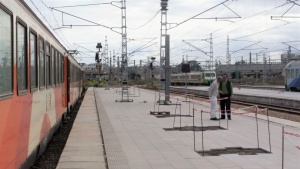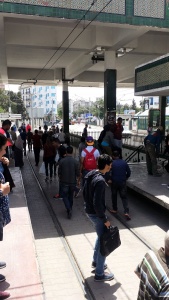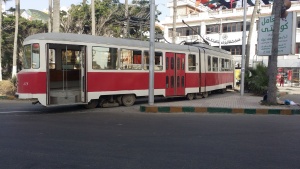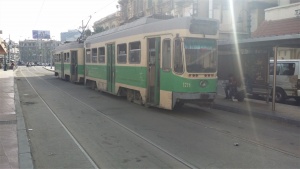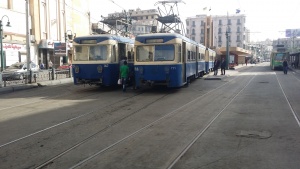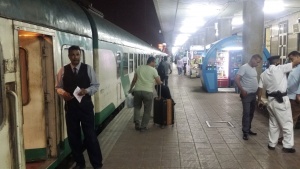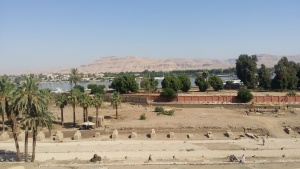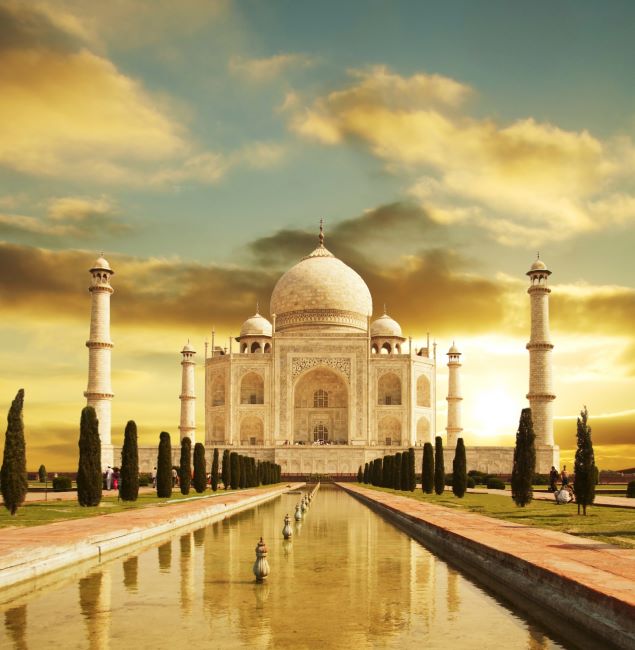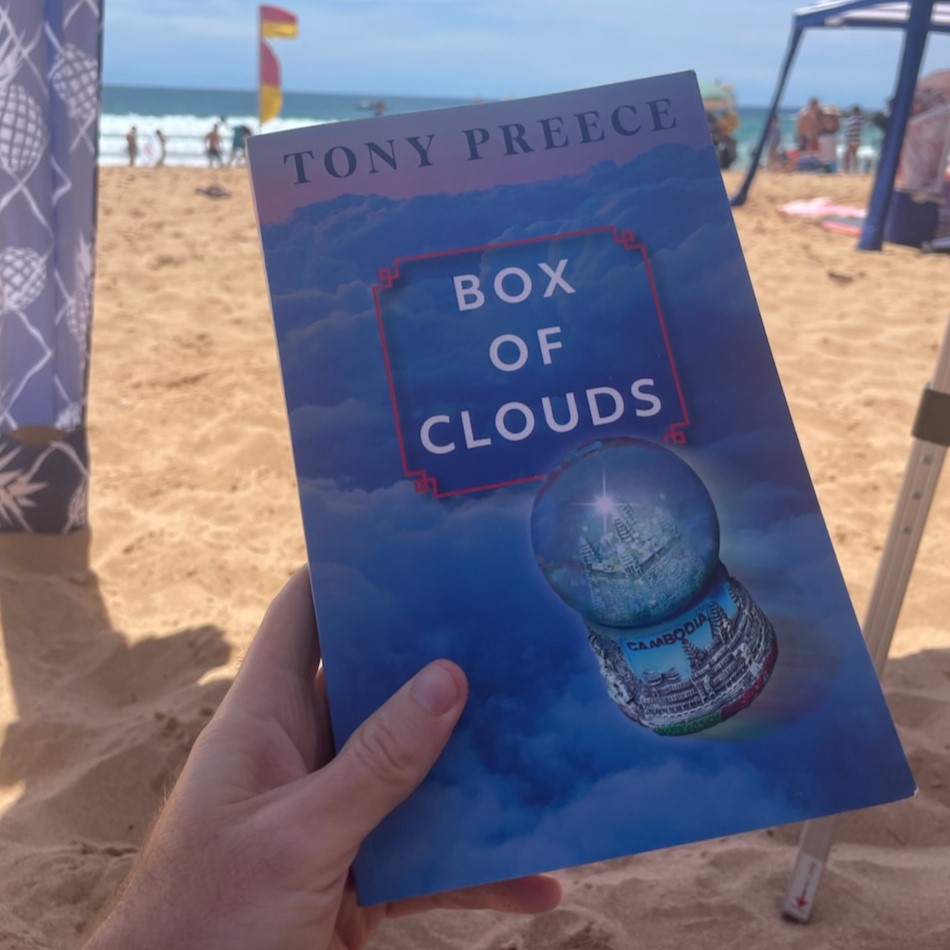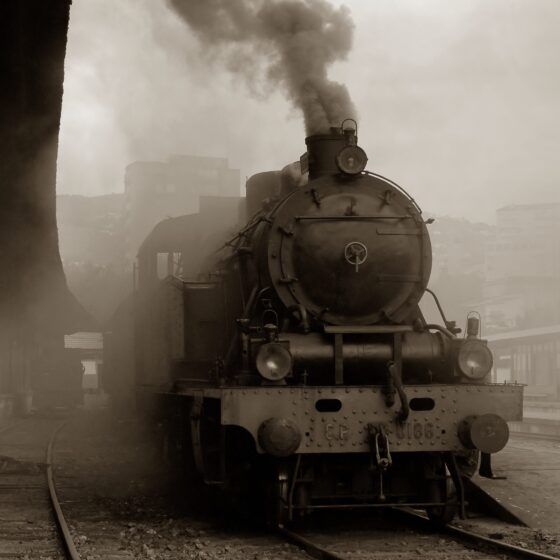
Rolling Stock Nth Africa
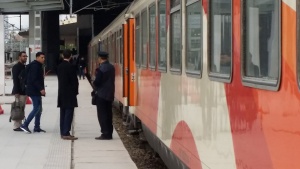 Locomotives officially opened for public railway use on 27 September 1825. Expanses of previously impassable terrain opened new frontiers beckoning adventurers onboard. Ever since, rail travel has inspired artists, writers, songwriters, and filmmakers spinning dreams of romance, mystery, excitement, espionage, grandeur, sophistication, illicit affairs, even murder. Two centuries later passengers are driven to ride the rails as a conveyance of convenience and practicality.
Locomotives officially opened for public railway use on 27 September 1825. Expanses of previously impassable terrain opened new frontiers beckoning adventurers onboard. Ever since, rail travel has inspired artists, writers, songwriters, and filmmakers spinning dreams of romance, mystery, excitement, espionage, grandeur, sophistication, illicit affairs, even murder. Two centuries later passengers are driven to ride the rails as a conveyance of convenience and practicality.
All the above was accounted for when seeking a mode of travel west to east across north Africa, Casablanca to Cairo. Laurence of Arabia was foremost in my mind. David Lean’s sweeping desert images played before me imagining seven weeks in a mass of swirling white linen robes perched elegantly atop a camel. The “ship of the desert” in a camel train over the Sahara lost all allure when being spit at upon coming face to face with a belligerent dromedary. Morocco was deemed an elevated travel risk. Political tension was high in Algeria, Tunisia, and Egypt. Libya’s borders already closed. Government travel advice, avoid these countries. Undeterred, I went. All border crossings would be by air, rail made best sense for on ground travel hence this inventory of the means and ways of rolling stock. And so, Morocco three weeks, Tunisia one week, Egypt three weeks. The North African adventure began. All aboard.
Morocco
Casablanca Airport to City Port Station was the introduction to rail journeys and though well past its best-by date, this train is not dissimilar to the old Vic Rail red rattlers I had ridden as a youth. Vaguely comforting and familiar I leaned back into the cracked grey vinyl seat gazing out the window at unfamiliar shifting scenes. Clickety-clack past the mud brick urban sprawl before circling the Moorish jewel box architecture of the city, terminating amid the frenetic activity of the port fronting the Atlantic Ocean.
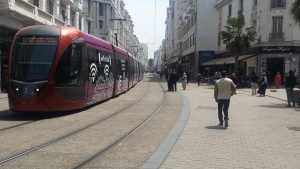 Casablanca’s rapid transit tramway system, two main lines, 71 stops, covers 47.4 kilometres proved simple to use and quick to see what is where in this mysterious city. So where is Rick’s Café? Spoiler alert. There is no such original establishment, it was created on set for the 1942 movie classic. To overcome tourist disappointment an American team replicated Rick’s Café opening on March 1, 2004, at Place du jardin public, 248 Boulevard Sour Jdid. Here’s looking at you kid.
Casablanca’s rapid transit tramway system, two main lines, 71 stops, covers 47.4 kilometres proved simple to use and quick to see what is where in this mysterious city. So where is Rick’s Café? Spoiler alert. There is no such original establishment, it was created on set for the 1942 movie classic. To overcome tourist disappointment an American team replicated Rick’s Café opening on March 1, 2004, at Place du jardin public, 248 Boulevard Sour Jdid. Here’s looking at you kid.
Looking 320 kilometres up the track waits Tangier. Departure station is Casa Voyageur arriving 2:10 hours later at Tanger Ville. The train is a two-class system. First class guarantees a reserved seat in a numbered compartment shared by six passengers. Second class is a free for all so choosing time of travel is imperative. A word about Moroccan currency the dirham. Currency cannot be purchased outside Morocco before you arrive, and upon departure dirham cannot be removed with you. Exchange carefully. Second class fares vary between 99 to 224 dirhams, first class is 292 dirhams (approximately $AUS 44.00). Prices vary according to the time of travel. I purchased my 1st class ticket a couple of days prior to departure. There are frequent train connections available every day, and luggage travels in the compartment with you. Pack wisely.
Similarly, the train from Tangier to Fez runs frequently timetabled services which are affordable, reliable, comfortable, clean, and safe. Rail travel around Morocco makes good sense.
Tunisia
Next, fly to Tunis, capital city of Tunisia home of the Arab Spring uprising. On the streets there is discernible unrest. Heavily armed military patrol the streets, and man barricades at important infrastructure facilities. Day three Ramadan begins, the most sacred month of the year in Islamic culture, clearing the streets from daylight to dusk of all but the profane infidels and shopkeepers who seek to feed them. The upside is clear access to the ancient ruins of Carthage fifteen kilometres north of the city and an almost empty Bardo National Museum, both highly recommended and readily accessible by rail.
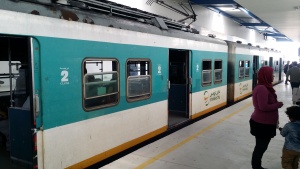 What looks like a rust bucket is the simplest way to get to the ruins of Carthage. The teal and white carriages of the TGM train are not in a race to win most beautiful wheeled transport. Interior seating is bare minimum, being hot and sticky inside windows and doors are mostly left open. It is no-frills, cheap, serviceable, practical, and it gets you there in around thirty minutes from Tunis Marine Station to Carthage Hannibal. Upon exit prepare to negotiate wildly as taxi drivers pounce promising the best tour at the best price. Hold extra in reserve, your driver will expect a tip. Give it over generously thanking them profusely – this is their livelihood, and you still got a great deal.
What looks like a rust bucket is the simplest way to get to the ruins of Carthage. The teal and white carriages of the TGM train are not in a race to win most beautiful wheeled transport. Interior seating is bare minimum, being hot and sticky inside windows and doors are mostly left open. It is no-frills, cheap, serviceable, practical, and it gets you there in around thirty minutes from Tunis Marine Station to Carthage Hannibal. Upon exit prepare to negotiate wildly as taxi drivers pounce promising the best tour at the best price. Hold extra in reserve, your driver will expect a tip. Give it over generously thanking them profusely – this is their livelihood, and you still got a great deal.
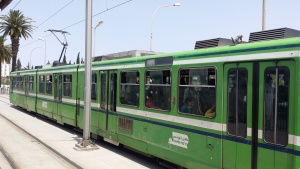 “Métro léger” is the light rail system that runs through the city. The track sweeps along at surface level on its own rail bed. The trains are usually coloured green. If you have survived Melbourne’s “whispering death” trams you have requisite skills to survive. Showing signs of wear and tear but certainly not enough to deter its hop on hop off nature. Even as the cheapest travel choice, fair evasion is the most widely used option. Join the locals as they jump out and scuttle over fences, bustle away via side streets, or scamper down underground tunnels, dispersing anywhere except exit gates where tickets must be shown. And yes I did. I scuttled. Fences no barrier to me.
“Métro léger” is the light rail system that runs through the city. The track sweeps along at surface level on its own rail bed. The trains are usually coloured green. If you have survived Melbourne’s “whispering death” trams you have requisite skills to survive. Showing signs of wear and tear but certainly not enough to deter its hop on hop off nature. Even as the cheapest travel choice, fair evasion is the most widely used option. Join the locals as they jump out and scuttle over fences, bustle away via side streets, or scamper down underground tunnels, dispersing anywhere except exit gates where tickets must be shown. And yes I did. I scuttled. Fences no barrier to me.
Egypt
Cairo, described to me as looking like stacks of crumpled brown papers bags, is surely one of the most confounding cities in the world, yet mysteriously compelling. Day one: purchase train tickets from Cairo onwards north to Alexandria return, and upon return change trains in Cairo south for Luxor on the highly touted overnight sleeping train. Cairo’s Ramses Station is cavernous, echoing, bustling, pushy, noisy, airless. The ticket vending machines and atm’s mostly dysfunctional. To laconic railway staff, customer service is an unwanted distraction. Moving between ticket service windows became a game of potluck discovering there are hourly departures to Misr Station in Alexandria either on a two-and-a-half-hour express service or the four-hour fifty-minute milk run. An easy choice but, three more service windows before I could make the purchase. The fly in the ointment being the return date and time. The saving grace is a cheap fare, air-conditioned, 1st class reserved seat and lordy a refreshment trolley that usually comes down the train selling tea, coffee & soft drinks.
Day two: roam the Egyptian Museum.
 Day three: with travel tickets secured board the train for Alexandria and get the hell out of here for the next two weeks. At the time of departure Ramses Station is not as intimidating as the experience two days earlier. Platform attendants smiled and were helpful. Securing my luggage and taking my designated seat I see shattered glass and a rock wedged between the two (now one) layers of windowpane. A relic of recent attacks across the country became a sudden reminder of exactly where I was. The journey validated the choice of travelling by rail beginning with the rarity of on-time departure, witnessing lives lived along the Nile, and lordy the arrival of the refreshment trolley. Alexandria’s Misr Station though run down is thick with atmosphere where the ghosts of romance-seekers past echoe grander days. My room at Windsor Palace Hotel opens directly onto the Mediterranean Sea separated only by the Grand Corniche. Five weeks in North Africa has not dulled my senses.
Day three: with travel tickets secured board the train for Alexandria and get the hell out of here for the next two weeks. At the time of departure Ramses Station is not as intimidating as the experience two days earlier. Platform attendants smiled and were helpful. Securing my luggage and taking my designated seat I see shattered glass and a rock wedged between the two (now one) layers of windowpane. A relic of recent attacks across the country became a sudden reminder of exactly where I was. The journey validated the choice of travelling by rail beginning with the rarity of on-time departure, witnessing lives lived along the Nile, and lordy the arrival of the refreshment trolley. Alexandria’s Misr Station though run down is thick with atmosphere where the ghosts of romance-seekers past echoe grander days. My room at Windsor Palace Hotel opens directly onto the Mediterranean Sea separated only by the Grand Corniche. Five weeks in North Africa has not dulled my senses.
Novelist E.M. Forster transfixed by Alexandria’s charm wrote a history and a guide. Lawrence Durrell, author of The Alexandria Quartet, lived at the Cecil Hotel just three doors away. Centuries of volatile history etched into the landscape is at your fingertips. Attempts to use the network of trams outwitted me. The best I can say there is a red one, a green one, and a blue one. Guided by a paper map I explored by foot and watched the trams shuttle past.
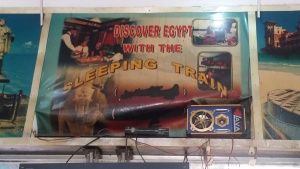 “Discover Egypt with the Sleeping Train” seems to defeat the purpose of being a tourist. The pitch being an air-conditioned sleeping-car, a secure, lockable compartment. Each compartment has a fold down bed, washbasin, soap, towel, and clean bedding. A 2-pin shaver socket near the sink can also recharge cameras and mobiles with a suitable adaptor. Luggage goes in your compartment, there’s a recess over the door for large bags. The fare includes a basic airline-style tray-meal in the evening and a simple breakfast, although tea & coffee are charged for. I took the bait from Cairo to Luxor. The reality less than the promise. I am tall, the bed is narrow. I am old, so is the train however, I think I may be in better condition. Foreigners are charged higher fares than Egyptian nationals.
“Discover Egypt with the Sleeping Train” seems to defeat the purpose of being a tourist. The pitch being an air-conditioned sleeping-car, a secure, lockable compartment. Each compartment has a fold down bed, washbasin, soap, towel, and clean bedding. A 2-pin shaver socket near the sink can also recharge cameras and mobiles with a suitable adaptor. Luggage goes in your compartment, there’s a recess over the door for large bags. The fare includes a basic airline-style tray-meal in the evening and a simple breakfast, although tea & coffee are charged for. I took the bait from Cairo to Luxor. The reality less than the promise. I am tall, the bed is narrow. I am old, so is the train however, I think I may be in better condition. Foreigners are charged higher fares than Egyptian nationals.
It was welcome relief at 6am being cast into the pre-dawn of Luxor. I wheeled my suitcase through the shadowy streets to Hotel Nefertiti (I kid you not) whereupon I was invited to take breakfast on the rooftop. With the sun breaking over Luxor temple, the Nile River already alive with feluccas, just visible in the distance sits Queen Hatshepsut’s temple nestled into the Valley of the Kings. With one-hour flights from Luxor to Cairo the same price as the sleeping train it was an easy decision. My North African adventure with rail travel is complete.



